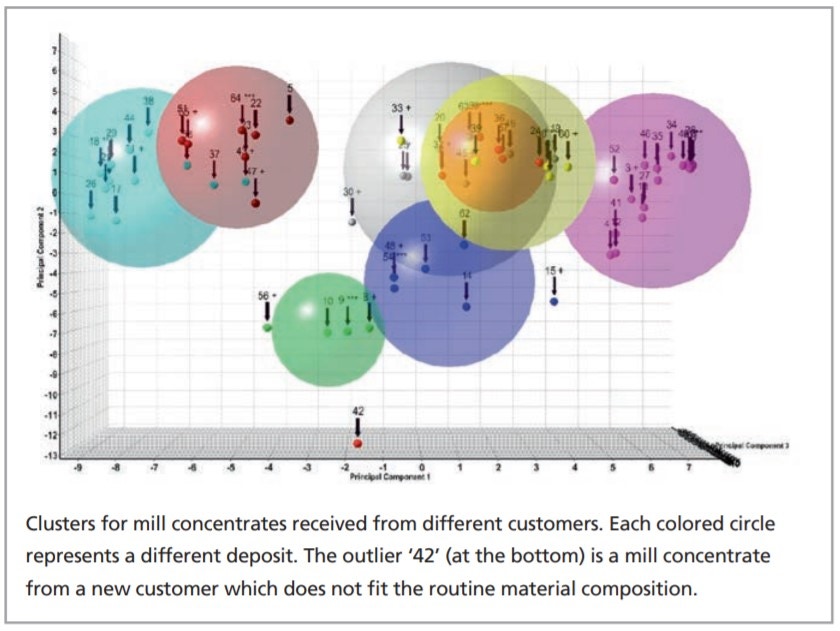The smelter works with additional reactants to compensate for impurities in the incoming material. In order to achieve the most efficient and cost-effective process, the charge make-up for each deposit needs to be perfected, requiring detailed knowledge of each deposit’s mineral composition. To gain this insight, Rand Refinery purchased a Malvern Panalytical CubiX3 Minerals industrial X-ray diffractometer in 2012. This article presents a few of the many applications for this system at the company.
Determination of magnetite/ hematite concentrations
One of the components of the incoming material is iron bound in the minerals magnetite (Fe3O4) and hematite (Fe2O3), which require different amounts of reactant. Where elemental analysis previously only revealed the concentration of iron, X-ray diffraction can now easily determine the amounts of both phases. With this knowledge furnace conditions can be optimized, resulting in energy saving.
Continuous slag analysis
Previously slag analysis was only done after completion of the melting process. Rand Refinery now uses continuous slag analysis, where XRD can determine crystalline phases and amorphous content. This better control considerably improves the effectiveness of the melt.
Elimination of impurities
CubiX3 Minerals proved it’s value in quality control by identifying silicon carbide and graphite in surface markings on the 1 kg gold cast bars. Tracing these materials back to their sources in the crucible and the casting moulds, enabled Rand Refinery to better control their ingot production process.
Cluster analysis
The deposits Rand Refinery receives are varying in composition, meaning that there is not one routine smelter charge make-up for mill concentrates. Here, cluster analysis proves very useful:
- All datasets are automatically sorted into closely related classes
- The most representative scan of each class is identified
- The two most different scans of each class are identified
- Outliers not fitting into any class are identified

Rand Refinery originally purchased the XRD system in 2012 to gain better control over its smelter processes. Quickly these expectations have been exceeded and Rand Refinery is now in the process of expanding the use of their CubiX3 Minerals from the smelter to the refinery.
